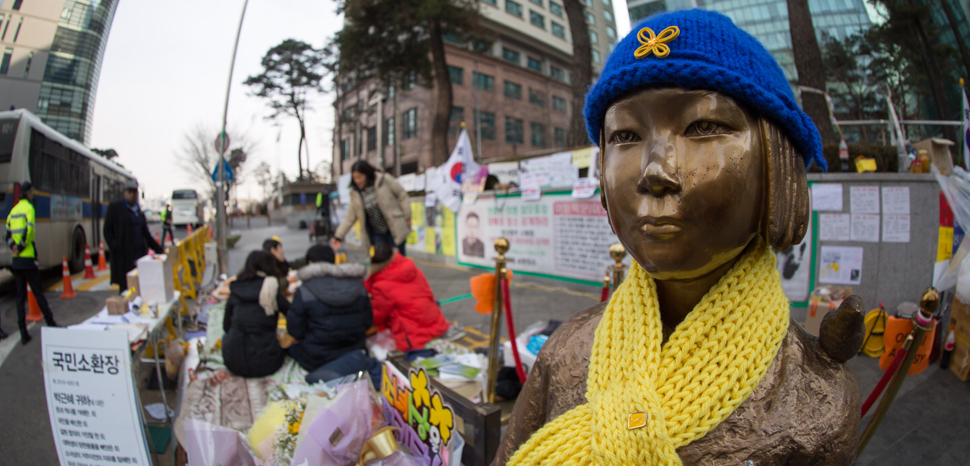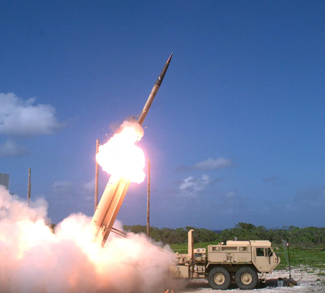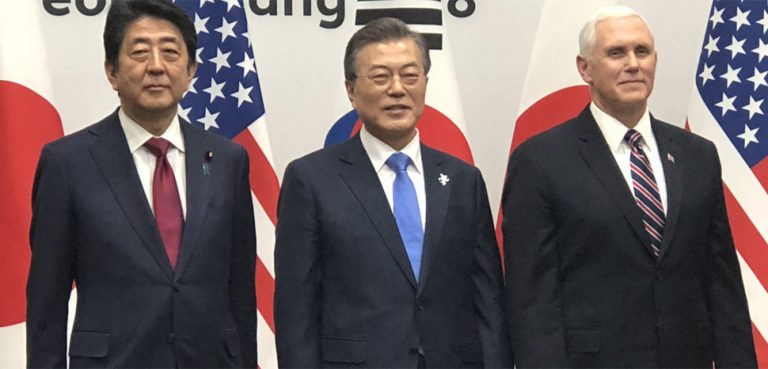South Korea is all set to reopen a complaint filed with the WTO over Japan’s controls on the technological exports to its’ companies, which it halted, while retaining its military intelligence sharing agreement with Japan in November 2019. South Korea has claimed that Japan’s tightening controls would threaten South Korea’s export-dependent economy. This is in continuation of the trade dispute that started between Japan and South Korea in 2019. Owing to the looming economic crisis in the wake of pandemic, will Japan and South Korea put their ongoing trade dispute on pause?
Brief History of the Trade Dispute
South Korea and Japan have been embroiled in a prolonged trade war since 2019-20. At the center of the dispute is South Korea’s demand from Japan to compensate for war crimes committed during the Japanese occupation of the Korean Peninsula from 1910-1945, especially the use of forced labor.
The trade dispute started in July 2019 when Japan restricted exports of three chemicals to South Korea, critical for making semiconductors and display screens. In August, it removed South Korea from its “white list” of countries that receive preferential trade treatment. South Korea then filed a complaint with the World Trade Organization (WTO) about Japan’s export controls and removed Japan from its own white list of trusted trade partners. Further, in the wake of the pandemic, Japan’s adoption of a temporary 14-day self-quarantine period for people flying in from South Korea and China, as well as the suspension of the visa waiver program, prompted Seoul to suspend its own visa-free entry program.
Economic Consequences of the Trade Dispute
For one, there has been added bureaucratic legwork and increased shipping delays. Companies which import and export goods between the two countries have begun to experience difficulties. Import-export procedures, which had traditionally taken five days, could now take as many as 15.
Supply chain disruption is another problem. In certain global value chains, Japan and South Korea are significant players. Several experts have raised concern about the threats the trade dispute poses to global flows of high-tech components.
Rajiv Biswas, Asia-Pacific chief economist at IHS Markit, says if Japan’s export controls remain in place for a prolonged period it “could disrupt the global electronics supply chain” given South Korea’s dominance in the memory chip market. He says the price of memory components “could significantly increase due to the inability of the other memory suppliers to meet global demand.”
Five of America’s largest tech industry groups, including the Semiconductor Industry Association, issued a joint letter declaring that “non-transparent and unilateral changes in export control policies can cause supply chain disruptions, delays in shipments, and ultimately long-term harm to the companies that operate within and beyond your borders and the workers they employ.”
There is also a risk of an escalating trade gap between the two countries. Gleaning through the export-import figures (as per IMF), South Korea’s Imports (from Japan) fell from $54,559 million (2018) to $47,937 million (2019). So far as exports (from Japan) are concerned the figures tallied between $39,595 million (2018) and $28,242 million (2019).
The domestic attitude towards Japan’s products definitely impacted the imports; but so far, the export gap is not too big. However, if there’s an escalatory cycle between the two sides it would unsettle both economies, with spillover effects during a time when, due to COVID-19, the global economy is already entering a recessionary phase.
Both countries face a faltering growth outlook. DHL’s Global Trade Barometer reported that over the past three years while Japan’s growth dropped by five points to 48, and South Korea’s growth outlook decreased by 2 points to 43.This is the first time in more than three years that each country’s GTB outlook has fallen below 50, indicating a decline in outlook growth. Overall the statistics indicated that Japan’s two-way trade with South Korea sunk by 41%, with both exports and imports falling.
Finally, there’s a possibility of a mutual boycott of goods and services. The dispute has led to people in both countries boycotting each other’s products. The boycott for Japanese goods intensified in July. Sales of Japanese cars in South Korea plunged 32 percent in July 2019, bringing down market share by 6%. Beer sales plummeted by almost 97%; and retailing companies Like Uniqlo stores in South Korea were hit with low sales numbers. The number of Koreans visiting Japan also slumped 7.6 percent in July 2019.
COVID-19’s Impact in Japan and South Korea
COVID-19 has had a major impact on the economies of both countries.
Japan’s economy has reportedly already entered a recessionary phase. In the period between January and March, the GDP contracted by 3.4%. During the first quarter, all the major indicators – including consumer spending, exports, and production – went through a low phase. The country could record a contraction of over 20% in the second quarter. According to reports, if the pandemic continues to intensify in the second half of the year, the Japanese economy may contract by 4.6% in 2020, before recovering slightly to grow by 2.8% in 2021. In the wake of the pandemic, both domestic and foreign demand have dipped. Japan is struggling to shift from crisis growth and come up with growth strategies. Although the country has yet to record high unemployment rates, reports claim that the official figures don’t reflect the vast amount of the population who are still employed but are not receiving paychecks for their jobs. Factoring in the 4 million people on leave, the unemployment rate could hit 11.5% (it was just 2.6% in April).
Reports show that the South Korean economy contracted 1.4% in the first quarter, which marks the biggest drop since 2008 financial crisis. Over that period, exports dived by 24.3%, or a 17.4% fall in exports per working day. As markets in the U.S, Europe, and Japan have shrunk, chip exports, South Korea’s biggest source of income is attracting less demand. Economist Robert Carnell has predicted a weak second quarter for the South Korean economy due to COVID-19 and the global recession. As per reports, the unemployment rate has climbed to 4.5% in May, up from 3.8% in April – its highest since 2010.
Conclusion
After a series of talks between the trade ministries of both countries earlier this year failed, and now with South Korea’s announcement that it’s reopening its’ complaint to WTO, the Japan-South Korea trade dispute seems to be a never-ending game. As the world enters a phase of economic recession, a trade dispute like this will add to the woes given the various economic setbacks the countries are suffering right now. Apart from that the frayed bilateral ties, it also threatens to impact the security trajectory of the region. We’ve seen in the past how this bilateral trade dispute can put the GSOMIA intelligence-sharing agreement at risk, pushing the US-South Korea-Japan trilateral alliance into uncertainty. Apparently a scenario of an escalating trade dispute has multidimensional costs involved. Taking into account the escalating global economic crisis, it is in both countries’ interests to reach an agreement putting an end to the dispute.




